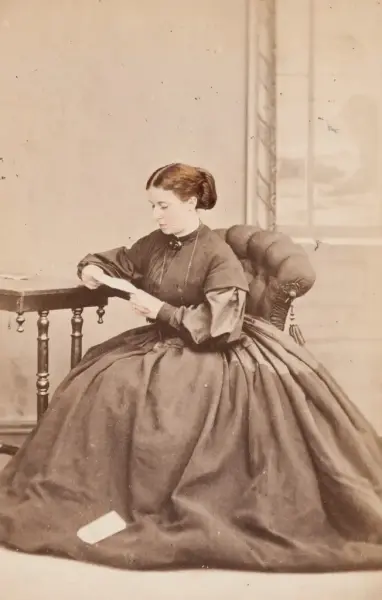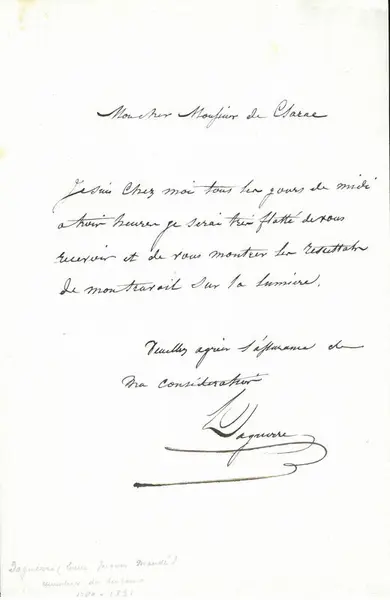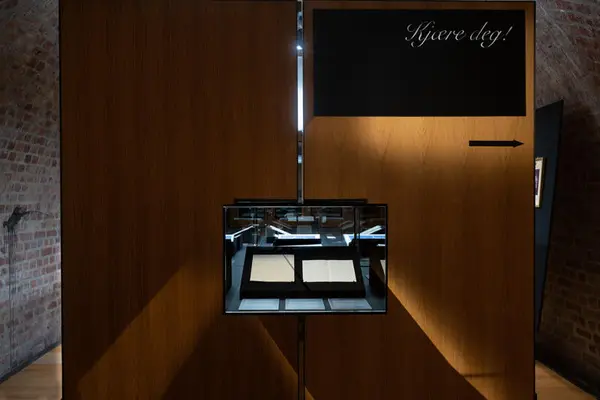-
H. J. Mockett, Business card portrait of a woman reading a letter, c. 1860–1870. Preus Museum collection.
Letters and other written communication have had a great impact on the development of and understanding of photography. They give us little stories about photography and the people behind them. As written sources, letters can tell us something about technique, chemistry and photography at the given time.
In addition, texts about photography are a possible start to a sustained discourse about photography, which develops in step with photography's changing practices.
In the exhibition, you can let yourself be fascinated by the fact that you are looking at a piece of paper with a text, written by people a very long time ago, in a time that was quite different from our present. What can you read from the way the letter is written? Is it done in haste, or is it a painstakingly written letter? Maybe it was written in anger or joy?
A letter from Daguerre himself
Undated letter from LouisJacques MandéDaguerre(1787–1851) to Herr Clarac. Preus Museum's collection.
Daguerre has remained the inventor of photography.
- 1/1
In the letter he writes:
My dear Mr. Clarac.
I am at home every day from noon (12 o'clock) to three o'clock, and I would be flattered to receive them at home and show you the results of my work on the light.
Yours sincerely



